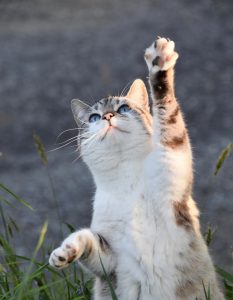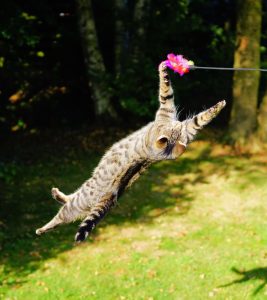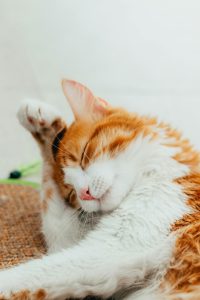Title: The Feline Fascination: Understanding Why Cats Knead
Introduction:
Cats are fascinating creatures, and one of their unique behaviours that captures the attention of cat owners worldwide is kneading. This rhythmic motion, where a cat presses its paws against a soft surface, often accompanied by purring, is not only endearing but also deeply ingrained in feline nature. In this article, we’ll delve into the various reasons why cats knead and explore the intriguing aspects of this behaviour.

Instinctual Heritage:
Kneading is a behaviour rooted in a cat’s instinctual heritage. Kittens instinctively knead their mother’s belly during nursing to stimulate milk flow. This early behaviour carries over into adulthood, becoming a comforting and soothing action for cats. Understanding this instinctual connection helps unravel the mystery behind why cats continue to knead as they grow older. Another great question could be if cats can eat bananas.
Comfort and Contentment:
Kneading is often associated with a cat’s state of comfort and contentment. When a cat feels relaxed and secure in its environment, it may exhibit kneading behaviour as a way to self-soothe. Soft surfaces, such as blankets, pillows, or even their owner’s lap, become the preferred canvases for this rhythmic motion.
Territory Marking:
Cats possess scent glands in their paws, and as they engage in kneading, they emit pheromones onto the surface they are pressing. This territorial marking behaviour is a way for cats to establish their presence and claim ownership of a particular space. Understanding kneading as a form of communication adds a layer of complexity to this seemingly simple action.
Stress Relief:
While kneading is often associated with relaxation, it can also serve as a stress-relief mechanism for cats. Cats may knead when faced with anxiety or tension, using the rhythmic motion to comfort themselves. Identifying stress-related kneading is crucial for cat owners to address underlying issues and create a conducive environment for their feline companions.
Nostalgia and Positive Associations:
Cats may develop positive associations with specific environments or experiences, leading them to knead as a response to nostalgia. For example, a cat that associates kneading with receiving treats or affection may display this behaviour when anticipating such positive interactions. Understanding these associations helps strengthen the bond between cats and their owners.
Physical Exercise:
Kneading is not only a mental activity but also a physical one. The motion engages a cat’s muscles, providing a mild form of exercise. This can be particularly beneficial for indoor cats that may have limited opportunities for physical activity. Encouraging kneading can contribute to a cat’s overall well-being and health.

Attention-Seeking Behaviour:
In some cases, cats may knead as a way to seek attention from their owners. The rhythmic motion often draws people’s focus, and cats may use kneading as a subtle but effective way to communicate their desire for interaction, petting, or playtime.
Conclusion:
The enigmatic behaviour of cat kneading encompasses a variety of reasons, ranging from instinctual heritage to emotional expression. Understanding why cats knead not only deepens the connection between cat owners and their feline friends but also sheds light on the intricate world of feline communication. As cat enthusiasts, appreciating and respecting these behaviours allows us to create an environment that nurtures our cats’ physical and emotional well-being, fostering a harmonious and enriching relationship.
